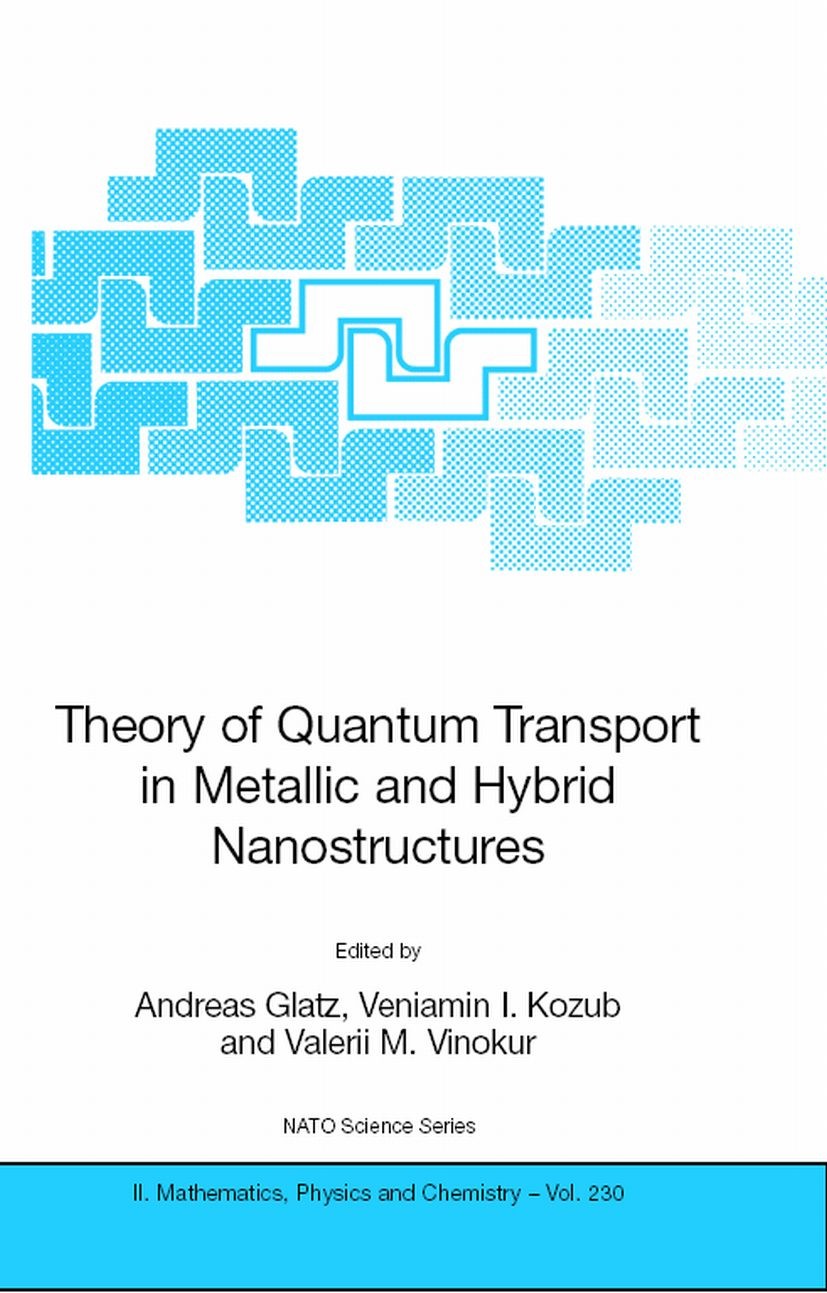| 书目名称 | Theory of Quantum Transport in Metallic and Hybrid Nanostructures |
| 编辑 | Andreas Glatz,Veniamin I. Kozub,Valerii M. Vinokur |
| 视频video | http://file.papertrans.cn/924/923967/923967.mp4 |
| 概述 | Presents forefront results in the area of nanophysics of metal-based structures.Presentations are physically transparent and simple and yet advanced.Young readers are immersed in advance contemporary |
| 丛书名称 | NATO Science Series II: Mathematics, Physics and Chemistry |
| 图书封面 |  |
| 描述 | A new science emerges at the intersection of modern physics, computer s- ence,andmaterialscience. Thestruggletofurtherminiaturizeisputtingna- technology to the verge of creating single-electron and/or single-spin devices that operate by moving a single electron (spin) and can serve as transistors, memory cells, and for logic gates. These devices take advantage of quantum physics that dominates nanometer size scales. The devices that utilize met- based hybrid nanostructures may possess signi?cant advantages over those exploiting purely semiconducting materials. First, the chemistry of metals is typically simpler than that of semiconductors. Second, the electric properties of metals are much less sensitive to the structural defects and impurities than those of semiconductors. Next, metallic devices allow better electric and th- mal contacts. Another important plus point is that in metals the electron de Broigle wavelength is smaller by many orders of magnitude as compared to that in semiconductors. This makes metallic devices more promising with respect to their size - down to the size of an atom. Further, high bulk and interface thermal conductance in metallic devices are bene?cial |
| 出版日期 | Conference proceedings 20061st edition |
| 关键词 | Chemistry; Experiment; Josephson junction; Mathematics; NATO; Physics; Science; Semiconductor; Series II; Sup |
| 版次 | 1 |
| doi | https://doi.org/10.1007/1-4020-4779-7 |
| isbn_softcover | 978-1-4020-4778-7 |
| isbn_ebook | 978-1-4020-4779-4Series ISSN 1568-2609 |
| issn_series | 1568-2609 |
| copyright | Springer Science+Business Media B.V. 2006 |
 |Archiver|手机版|小黑屋|
派博传思国际
( 京公网安备110108008328)
GMT+8, 2025-12-17 19:36
|Archiver|手机版|小黑屋|
派博传思国际
( 京公网安备110108008328)
GMT+8, 2025-12-17 19:36


